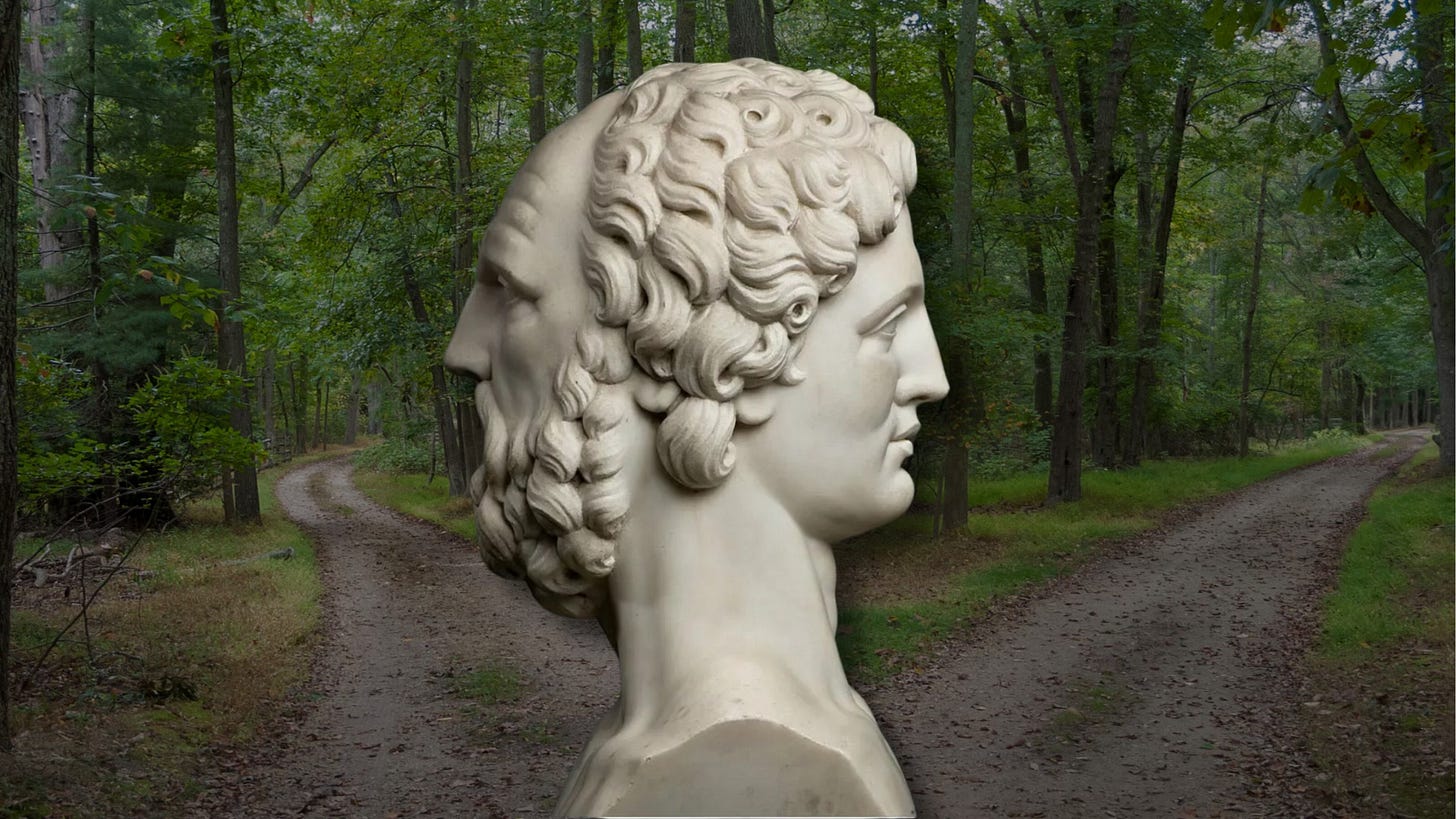The Two Faces of Time
January, named after the two-faced Roman god Janus, symbolizes both beginnings and endings. From ancient calendars to timeless traditions, let’s explore how past stories continue to shape today! 👀
Did you know that January and February didn’t even exist on the calendar at one point? When the first Roman calendar was created in the 700s BC, the year only had 10 months. No January, no February. Why? Because the year began in March. March, or Martius, was named after Mars, the Roman god of war. It represented the start of the farming season, which is why it marked the beginning of the year. The winter months, with no farming to be done, didn’t make it onto the calendar.
When the Romans named the months, some were dedicated to gods, while others were simply numbered. For example, December, the 12th month today, was actually the 10th month back then, and its name comes from the Latin word for “10” – decem.
January, however, got its name from Janus, the Roman god of doors, beginnings, and endings. Janus is often depicted with two faces: one looking to the past, and the other looking toward the future. It’s no surprise, then, that January, the start of the new year, is associated with him.
From Saint to Santa: A Timeless Legend
This time of year, full of new beginnings, of course brings to mind one very special figure: Santa Claus! 🎅🏻 But what if we told you Santa Claus is real—and that his tomb may have just been discovered? 👀
You’ve probably heard the phrase "Santa Claus is from Antalya, Turkey" This belief comes from the idea that Santa Claus was actually Saint Nicholas, born in the ancient city of Patara in Antalya. Saint Nicholas was born into a wealthy family. After losing his parents at a young age, he turned to religion and began giving away his inheritance to the poor. He was especially known for making children and sailors happy. Today, he’s still regarded as the patron saint of children and sailors.
Recently, a news story from Antalya made headlines around the world. During excavations around the Saint Nicholas Church in Demre, a sarcophagus was discovered. It was found beneath a layer of sand and gravel, possibly buried by a past flood or tsunami. Historical records indicate that Saint Nicholas’s tomb is believed to be in this area, so this sarcophagus might mark his sacred resting place. While it’s too early to confirm if this is truly his tomb, the discovery is certainly intriguing. If you’re curious for more details, you can check out the full story here.
New Beginnings, New Journeys✨
As we step into the new year, it's the perfect time for fresh starts, new adventures, and memorable journeys. Whether you're planning a getaway or exploring local wonders, the Piri Guide app is your perfect travel companion. With detailed guides, personalized recommendations, and insider tips, make 2025 the year you discover something new. Wishing you a year filled with joy, hope, and discoveries!✨
One More Thing…
If you're getting this newsletter, it's either because you recently used Piri Guide or you subscribed to it yourself. If you don't want to get these newsletters anymore, you can unsubscribe at any time. We appreciate your time. 😇
Have a great weekend, everyone! See you next week!👋🏼







